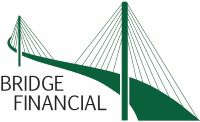
What Is a SIMPLE?
There are many types of employer-sponsored retirement plans. One that may appeal to small businesses and to self-employed individuals is the savings incentive match plan for employees (SIMPLE) because, as the name implies, it is easy to set up and administer, and employers are allowed to take a tax deduction for the contributions that are made.
SIMPLEs can be established by small businesses that have 100 or fewer employees (who were paid at least $5,000 or more in compensation during the previous year) and do not maintain other retirement plans. They can be structured as an IRA for each eligible individual or as part of a qualified cash or deferred arrangement such as a 401(k) plan. Typically, they are structured as SIMPLE IRAs.
Eligible employees (those who earned at least $5,000 in compensation during any 2 years before the current calendar year and expects to receive at least $5,000 during the current year) can make pre-tax contributions to their plans each year. Participants may contribute 100% of their salaries up to $16,500 in 2025 (increased from $16,000 in 2024). In 2025, those who are age 50 or older during the year can elect to make $3,500 (unchanged from 2024) catch-up contributions. These amounts are indexed annually for inflation. SIMPLE 401(k) plans may also allow employees to make Roth contributions. (Certain SIMPLE plans may have higher limits.)
New for 2025, workers age 60 to 63 can make a larger "super catch-up" contribution of $5,250. Like all catch-up contributions, the age limit is based on age at the end of the year, so you are eligible to make the full $5,250 contribution if you will turn 60-63 any time during 2025, but not if you will turn 64.
Administrators of SIMPLE IRAs are required to make either matching contributions equal to employee contributions (a dollar-for-dollar match up to 3% of an employee's salary) or non-elective contributions, which set a flat 2% contribution rate for each eligible employee. Employees are immediately 100% vested in contributions made by the employer, and they generally direct their own investments.
Distribution rules are similar to most IRA plans. Withdrawals are taxed as ordinary income and are subject to a 10% federal tax penalty if withdrawn prior age 59½, unless an exception applies. Required minimum distributions also must generally begin after the participant reaches age 73 (75 if age 73 is reached after December 31, 2032).
An additional rule for SIMPLE plans is that there is a two-year waiting period after the date when an employee enrolls in the plan to transfer contributions to another IRA on a tax-deferred basis. Any withdrawals taken during the first two years of an employee’s participation in the plan are subject to a 25% tax penalty in addition to ordinary income taxes. After the first two years, early withdrawals are generally subject to the 10% early-withdrawal penalty prior to age 59½. Of course, the IRS sometimes allows exceptions under special circumstances.
SIMPLE IRAs may be a good choice for small-business owners because the responsibility for funding the plan is shared between the employer and the employee. The start-up and maintenance costs also may be lower than for other qualified plans. If you are considering whether to establish a retirement plan for your business, you may want to make it SIMPLE.
The information in this newsletter is not intended as tax, legal, investment, or retirement advice or recommendations, and it may not be relied on for the purpose of avoiding any federal tax penalties. You are encouraged to seek guidance from an independent tax or legal professional. The content is derived from sources believed to be accurate. Neither the information presented nor any opinion expressed constitutes a solicitation for the purchase or sale of any security. This material was written and prepared by Broadridge Advisor Solutions. © 2025 Broadridge Financial Solutions, Inc.




